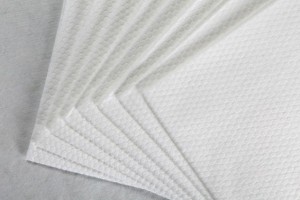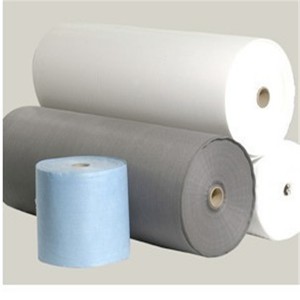What are the differences between pp nonwovens and spunlaced nonwovens? What is the main use? Let's get to know it today!
PP means that the raw material of non-woven fabric is PP, and spunlaced non-woven fabric refers to the production process. These two kinds of non-woven fabric are mainly different from the technological process, and the specific cloth is not essentially different. Now let's talk more about PP nonwovens: the exact name of nonwovens should be nonwovens, or nonwovens. Because it is a kind of fabric which does not need to be spun and woven, only textile staple fibers or filaments are oriented or randomly strung together to form a fiber net structure, and then reinforced by mechanical, thermal or chemical methods.
Characteristics of nonwovens:
Nonwovens break through the traditional textile principle, and have the characteristics of short technological process, fast production speed, high output, low cost, wide use, many sources of raw materials and so on.
Its main uses can be roughly divided into:
(1) Medical and sanitary nonwovens: surgical clothes, protective clothing, sterilized bags, masks, diapers, civilian rags, wipes, wet face towels, magic towels, soft towels, beauty products, sanitary napkins, sanitary pads and disposable sanitary cloth, etc.
(2) nonwovens for home decoration: Wall cloths, tablecloths, bed sheets, bedspreads, etc.
(3) non-woven fabrics for clothing: lining, adhesive lining, floc, set cotton, all kinds of synthetic leather backing, etc.
(4) Industrial nonwovens; filter materials, insulating materials, cement bags, geotextiles, coated fabrics, etc.
(5) Agricultural nonwovens: crop protective cloth, seedling raising cloth, irrigation cloth, thermal insulation curtain, etc.
(6) other non-woven fabrics: space cotton, thermal insulation materials, linoleum, smoke filter, bags, tea bags, etc.
Types of nonwovens
According to the different production process, non-woven fabrics can be divided into:
1. Spunlaced nonwovens: high-pressure fine water is sprayed on one or more layers of fiber network to make the fibers entangled with each other, so that the fiber network can be strengthened and have a certain strength.
2. Heat-bonded non-woven fabric: it refers to adding fibrous or powdery hot-melt bonding reinforcement material to the fiber net, and then heating, melting and cooling to strengthen the fabric.
3. Pulp airflow netted non-woven fabric: also known as dust-free paper, dry papermaking non-woven fabric. It uses the air flow network technology to loosen the wood pulp fibreboard into a single fiber state, and then uses the air flow method to make the fiber agglomerate on the net curtain, and then strengthen the fiber net into cloth.
4. wet non-woven fabric: the fiber raw materials placed in the water medium are loosened into a single fiber, and at the same time, different fiber raw materials are mixed to make the fiber suspension pulp, which is transported to the netting mechanism, and the fiber is netted and reinforced into cloth in the wet state.
5. Spunbonded nonwovens: after the polymer has been extruded and stretched to form a continuous filament, the filament is laid into a net, and then through self-bonding, thermal bonding, chemical bonding or mechanical reinforcement, the network becomes non-woven.
6. Melt-blown nonwovens: its technological process is as follows: polymer feeding-melt extrusion-fiber formation-fiber cooling-netting-strengthening into cloth.
6. Needle-punched non-woven fabric: it is a kind of dry non-woven fabric. Needle-punched non-woven fabric uses the puncture effect of needles to strengthen the fluffy fiber net into cloth.
8. Sewing-knitted nonwovens: a kind of dry nonwovens, which uses the structure of warp knitting coils to reinforce the fabric, yarn layer, non-textile materials (such as plastic sheets, thin plastic foil, etc.) or their combinations to make nonwovens.
Above is the introduction of the difference between pp nonwovens and spunlaced nonwovens. If you want to know more about spunlaced nonwovens, please feel free to contact us.
More from Our Portfolio
Post time: Mar-31-2022



